I was out photographing some of the native (and non-native) plant and animal species of the Ballona Wetlands with Dan Cooper (Cooper Ecological) yesterday morning. We’re currently working on a comprehensive book on the Birds, Plants and Wildlife of the Ballona Wetlands and we wanted to get photos of many of the plant species currently in bloom.
The Ballona Wetlands, near the Los Angeles International Airport (LAX), contain the last significant coastal wetland system left in Los Angeles County, and are now about 25% of their original size. They are also bifurcated by a large cement flood control channel which has cut off tidal flow to large areas. [Cooper Ecological]
The wetlands once included the areas now taken up by Marina del Rey, Venice, and Playa Vista, extending north to about present-day Washington Blvd. in Venice. It is one of the last significant wetlands area in the Los Angeles basin, and is named for Ballona Creek which now runs through the area as a flood control channel. In the 1930s the Ballona Creek corridor was channelized in concrete, thus greatly reducing the inflow of salt water to the marsh, and eliminating spring floods which brought freshwater to the wetlands. This channelization, and the construction of Marina del Rey in the late 1950s, reduced the 2,100-acre (8.5 km2) estuary to some 700 acres (2.8 km2). Additional open space east of the wetlands was converted to agricultural uses by the early 1900s, with cultivation continuing into the 1990s, when these became some of the last farm fields in the Los Angeles Basin. Most of this remaining open space was eliminated by the early 2000s to make way for Playa Vista, a planned mixed-use community east of Lincoln Blvd. [Wikipedia.com]
We started at the Southeastern corner of the Ballona basin – just below the Westchester Bluffs. The following photos will give you an idea of our vantage point over looking the entire Ballona Wetlands area.
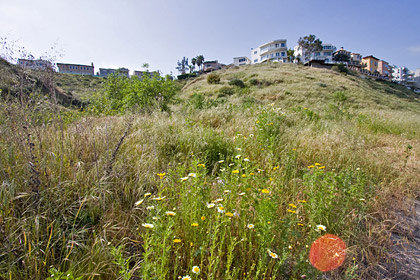
Westchester Bluffs
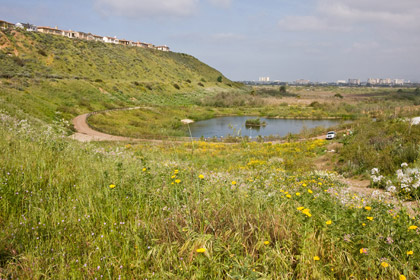
Ballona Freshwater Marsh
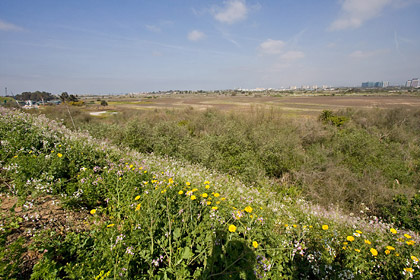
Ballona Wetlands
Some of the species we encountered included various ssp. of Fence Lizard, Side-blotched Lizard, Wooly Darkling Beetles and Yellow-faced Bumblebeed.
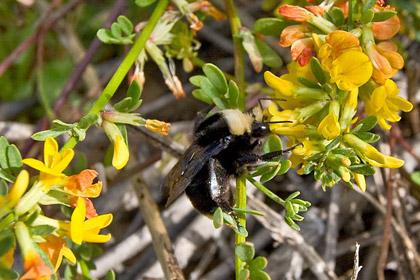
Yellow-faced Bumblebee
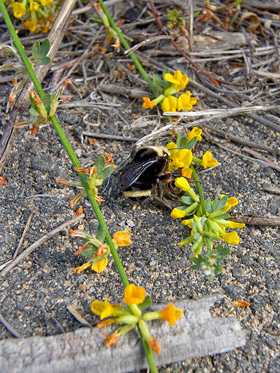
Yellow-faced Bumblebee
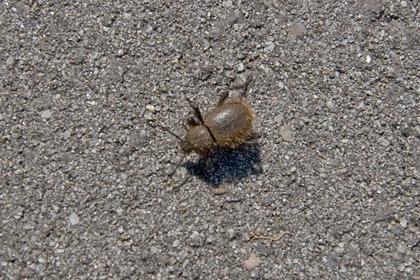
Wooly Darkling Beetle
We then worked out way West toward the coast between LAX and Playa del Rey and finally ended at Del Rey Lagoon.
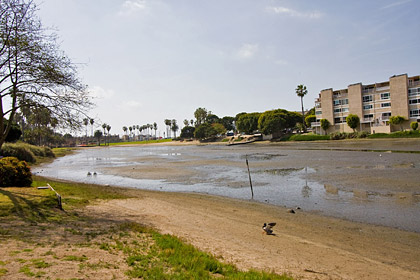
Del Rey Lagoon
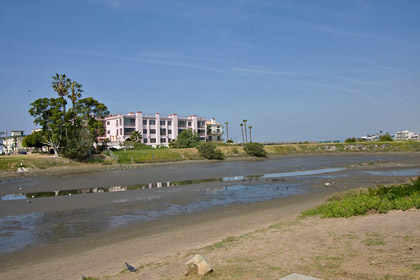
Del Rey Lagoon
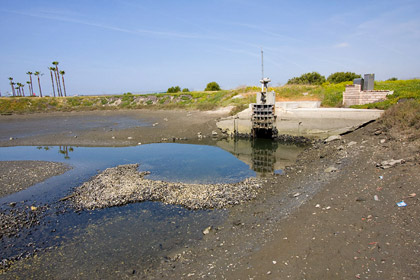
Del Rey Lagoon – Tidal Dam
We found a burrowing subspecies of Scorpion under a piece of wood and many California Horn Snails along the Lagoon.
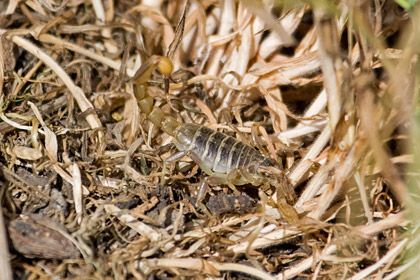
Scorpion [vejovis sp.]
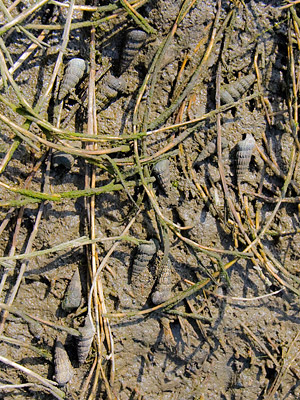
California Horn Snail
Photographs of the many plant species of the Wetlands now follow. I’ve indicated whether they are native or non-native. Many thanks to Dan Cooper for helping me get these labeled. I’d be completely lost without his assistance!
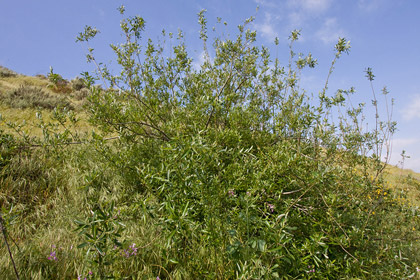
Arroyo Willow [Salix lasiolepis] -NATIVE-
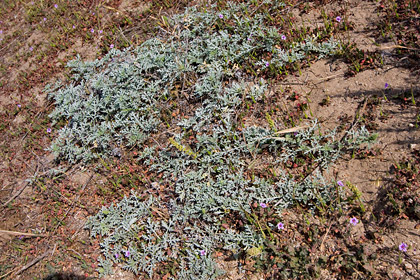
Beach Bur [Ambrosia chamissonis] -NATIVE-
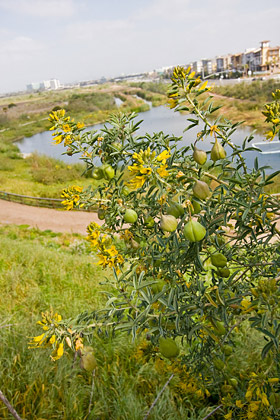
Bladderpod [Isomeris arborea] -NATIVE-
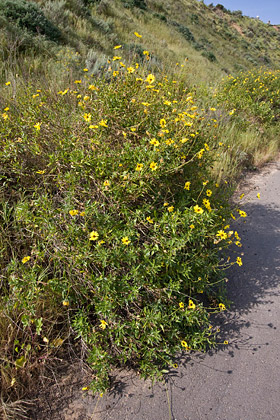
Bush Sunflower [Encelia californica] -NATIVE-
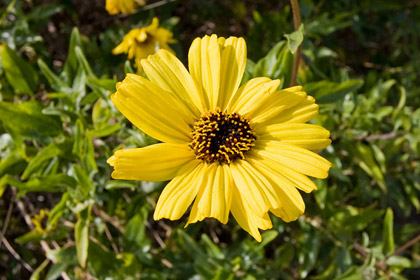
Bush Sunflower [Encelia californica] -NATIVE-
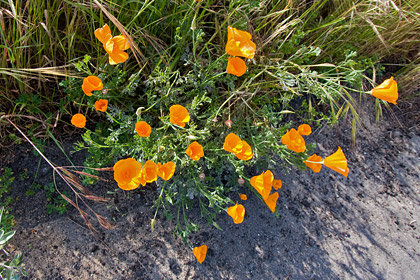
California Poppy [California poppy] –INTRODUCED–
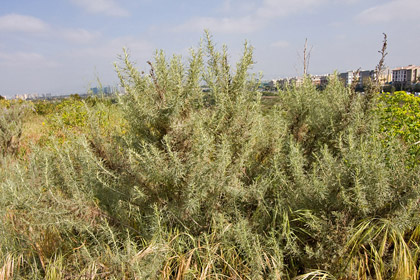
California Sagebrush [Artemisia californica] -NATIVE-
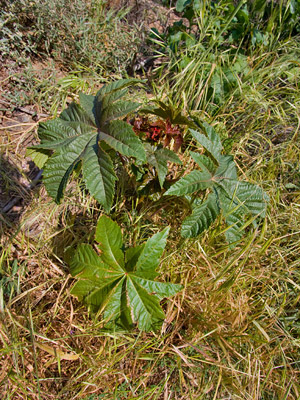
Castor Bean [Ricinus communis] –INTRODUCED–
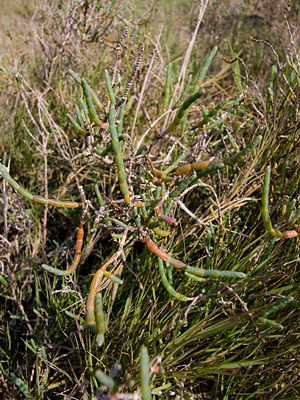
Common Woody Pickleweed [Salicornia virginica] -NATIVE-
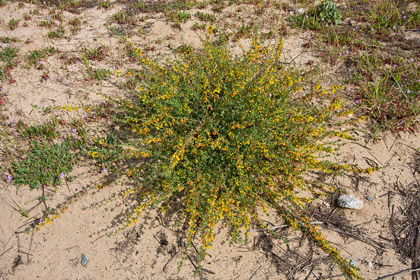
Deerweed [Lotus scoparius] -NATIVE-
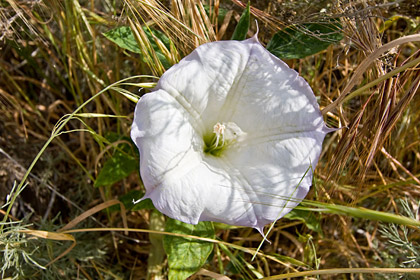
False Jimson Weed [Datura wrightii] -NATIVE-
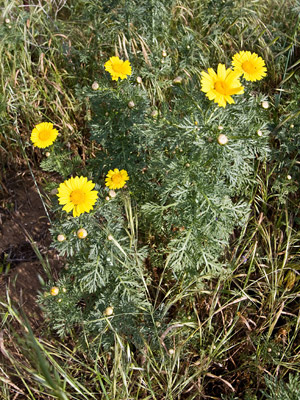
Garland Chrysanthemum [Chrysanthemum coronarium] –INTRODUCED–
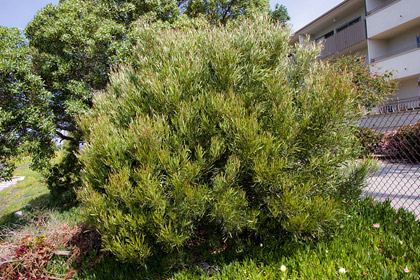
Golden Wattle [Acacia pycnantha] –INTRODUCED–
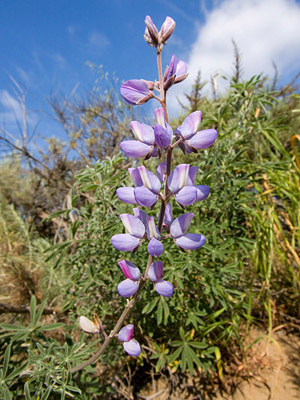
Lupinus -NATIVE-
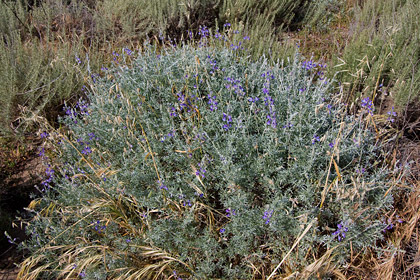
Lupinus -NATIVE-
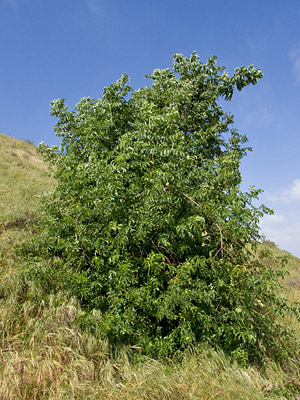
Mexican Elderberry [Sambucus mexicana] -NATIVE-
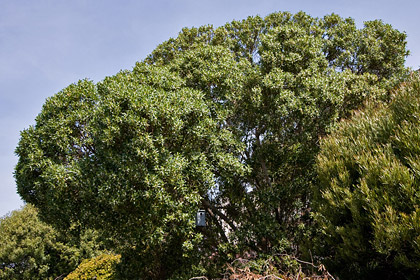
Myoporum [Myoporum laetum] –INTRODUCED–
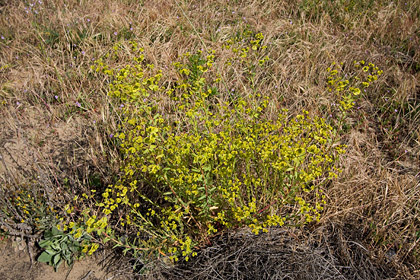
Petty Spurge [Euphorbia peplus] –INTRODUCED–
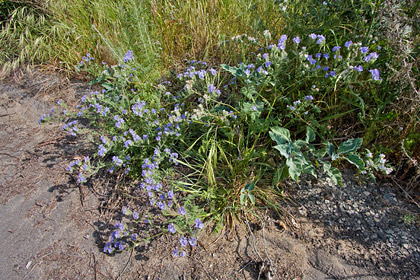
Phacelia -NATIVE-
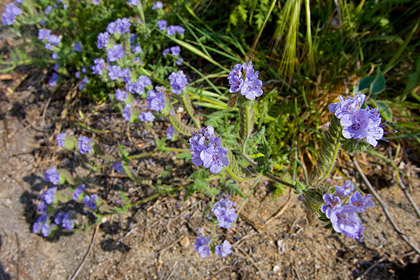
Phacelia -NATIVE-
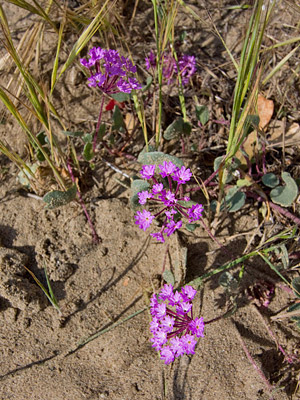
Sand Verbena [Abronia maritima] -NATIVE-
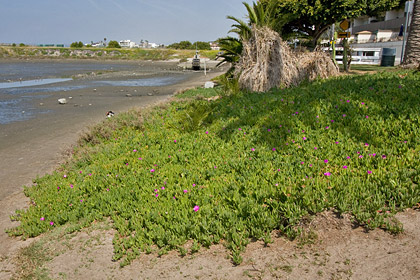
Sea Fig Ice Plant [Carporotus chilensis] –INTRODUCED–
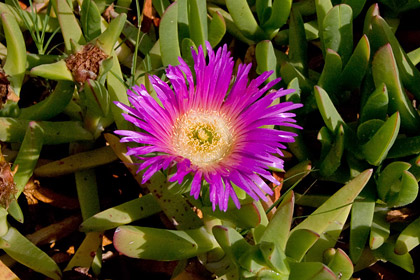
Sea Fig Ice Plant [Carporotus chilensis] –INTRODUCED–
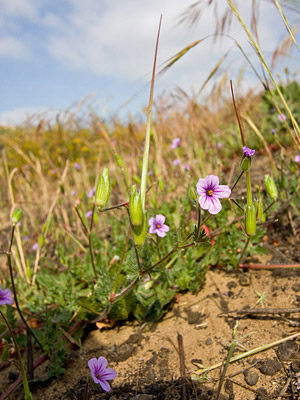
Short Fruited Filaree [Erodium brachycarpum] –INTRODUCED–
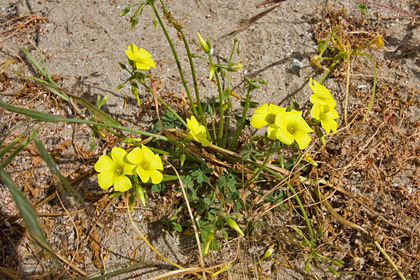
Sour Grass [Oxalis pes-caprae] –INTRODUCED–
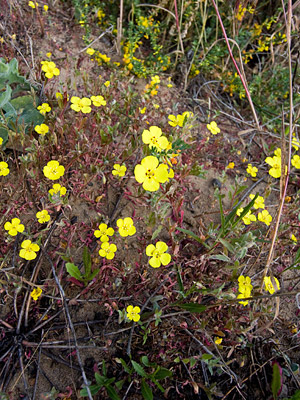
Suncups [Camissonia bistorta] -NATIVE-
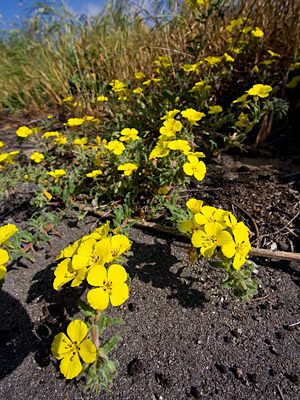
Suncups [Camissonia bistorta] -NATIVE-
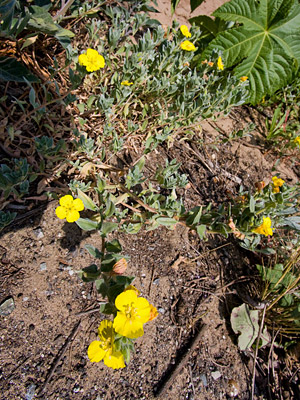
Suncups [Camissonia bistorta] -NATIVE-
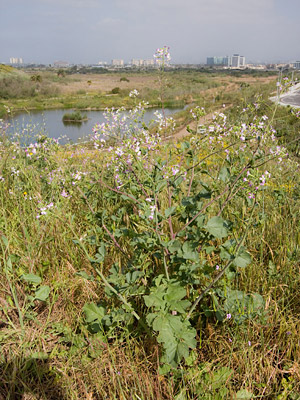
Wild Radish [Raphanus sativus] –INTRODUCED–
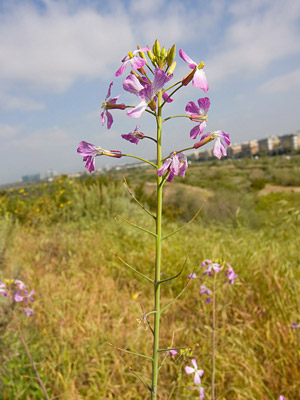
Wild Radish [Raphanus sativus] –INTRODUCED–
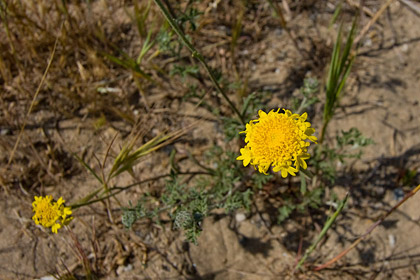
Yellow Pincushion [Chaenactis glabriuscula] –INTRODUCED–
Lisa Fimiani
December 4, 2010 at 5:57 pm
Can we use your photo of hornsnails in an interpretive panel?
Please contact me.
Thank you!
Lisa 🙂
Executive Director
Friends of Ballona Wetlands
Tanna
May 13, 2011 at 10:16 pm
Hello, I am a middle school student looking at my backyard and the pictures that you took are amazing! Thank you for naming them all, I have a big report due. Wonderful, don’t stop! Thanks again!